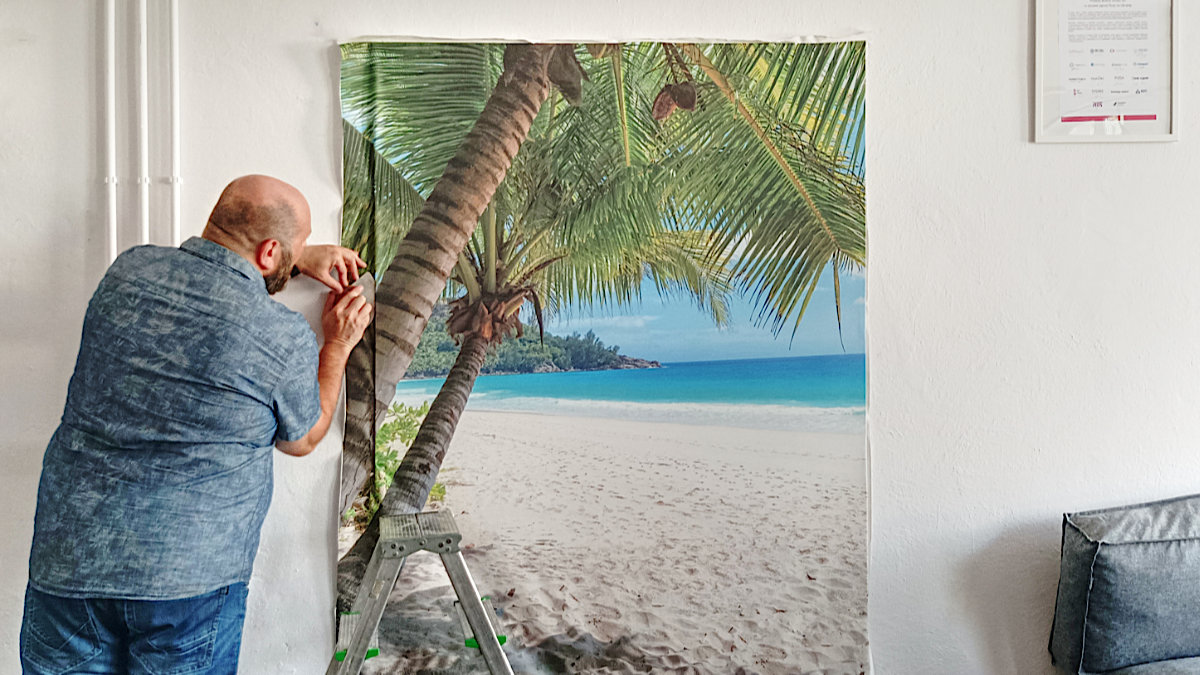Stretch ceilings made of fabric differ significantly from stretch ceilings made of PVC foil both in terms of properties and the method of installation. When it comes to the latter issue, the most important are: no need to harpoon the edges of the fabrics, the use of completely different mounting profiles and a different, easier way to install the fabric (no need to use a heater). However, fabrics have another rather unobvious advantage… They can be installed on the same mounting profiles with installed PVC foil. Thanks to this, it allows for a quick replacement of the existing coating at the customer’s site. In this article, we present the installation of fabric with graphics on the Comfort 190 aluminum wall and gasket profiles.
Default mounting profiles for ceiling or wall fabrics are made of PVC (or other similar plastic). They are also smaller because they do not require space for the harpoon. If a customer wanted to replace the PVC ceiling covering with fabric, we would theoretically have to remove the old aluminum mounting profiles and replace them with new plastic ones. However, there is another, simpler method. A special silicone gasket should be inserted into the old aluminum profile, which will perfectly stretch and hold the fabric. This makes the replacement of the PVC foil coating on the fabric easy and quick.
In the article we present the installation of fabric on the wall using the popular Comfort 190 wall and gasket profiles. The fabric was previously covered with a full-color print (which we offer) of a test nature (it was not a dedicated project). This was the step-by-step assembly process:
Installation of fabric on old aluminum profiles – step by step:
Installation of profiles to the wall

Traditionally, we start with dimensioning the surface with a laser rangefinder and cutting the mounting profiles at an angle of 45°. In the next step, we mark the places for drilling holes. Holes were drilled with a 6 gauge concrete drill bit and standard nylon plugs were inserted into the holes. Avoid polypropylene dowels as they may break and the profiles will come away from the wall. The profiles were tightened and their corners were sanded with a file.




The last step is to cut the silicone gasket to size and embed it in the inner part of the profile.
Installation of fabric on old profiles
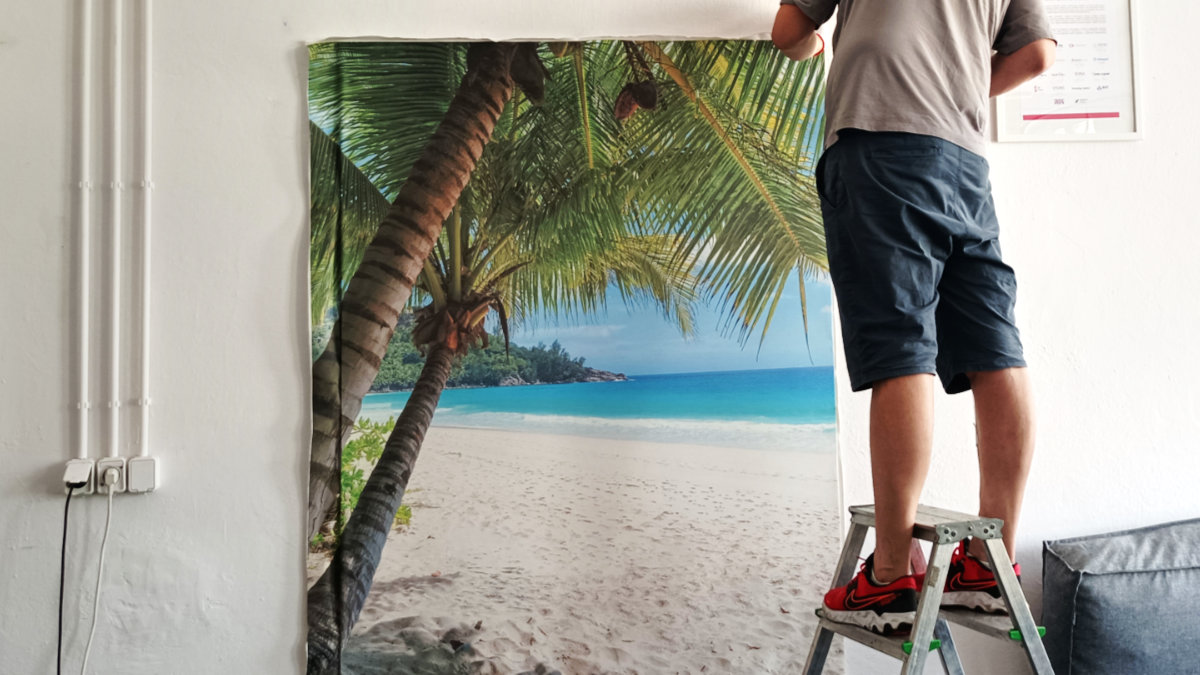
The fabric must be cut before assembly. IMPORTANT! The fabric does not have to be prepared in advance as precisely in terms of dimensions as PVC foil. It is enough that it has a 5-10 cm margin on each side. In fact, you can cut the ceiling surface yourself directly from the roll. There is no need to order a ready-made ceiling from the manufacturer, as is the case with PVC foil, because there is no harpooning in the fabrics!

In the case of fabric with graphics, its center must be perfectly matched to the center of the upper and lower mounting profile.

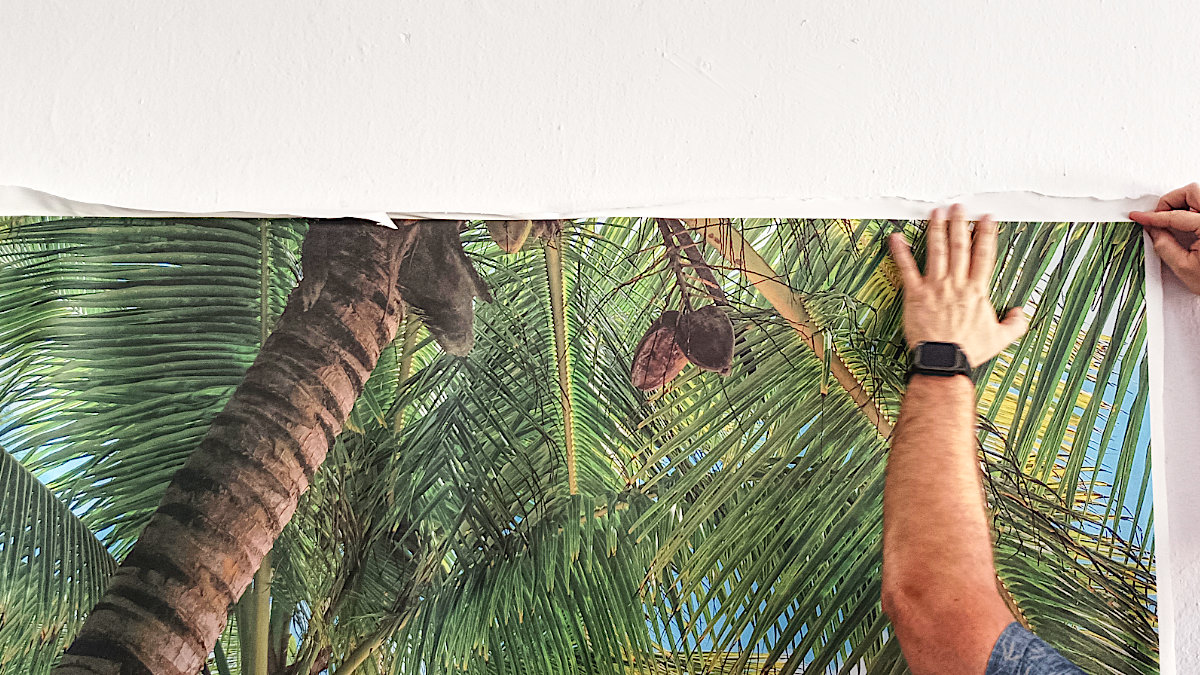
A special spatula with a characteristic rounded shape is used to clip the fabric to the mounting profile. The pinning technique is also different. In the case of plastic profiles – dedicated to the assembly of fabrics, technique is important – in the case of aluminum profiles, both technique and strength.
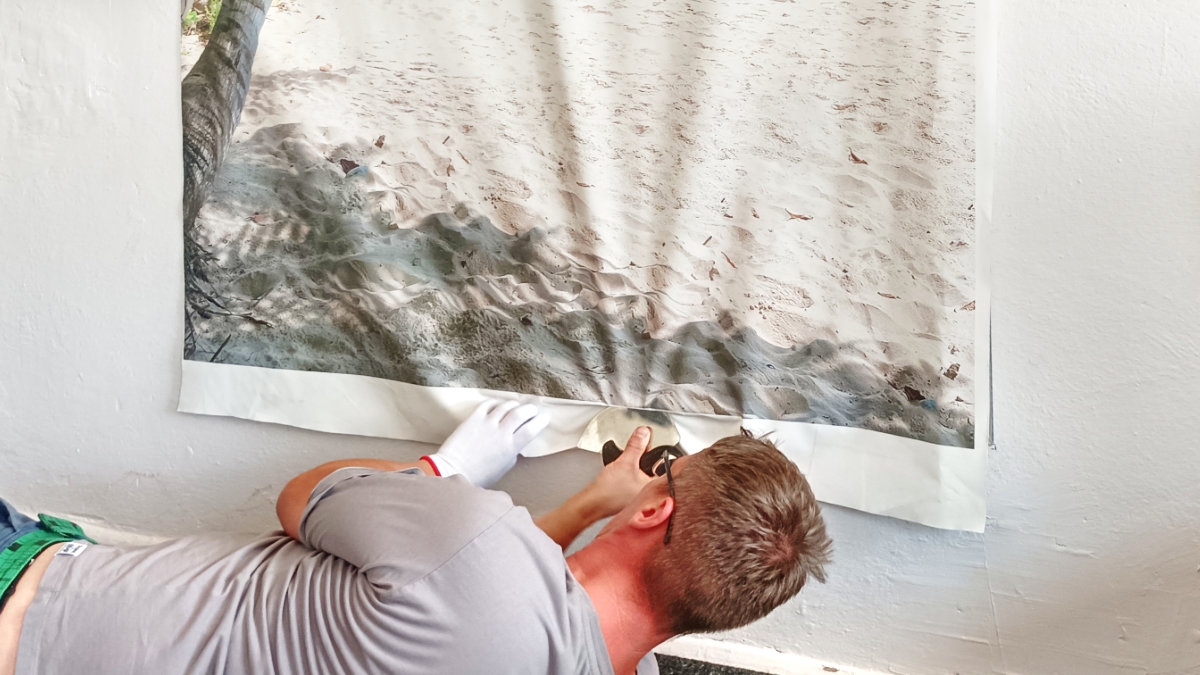

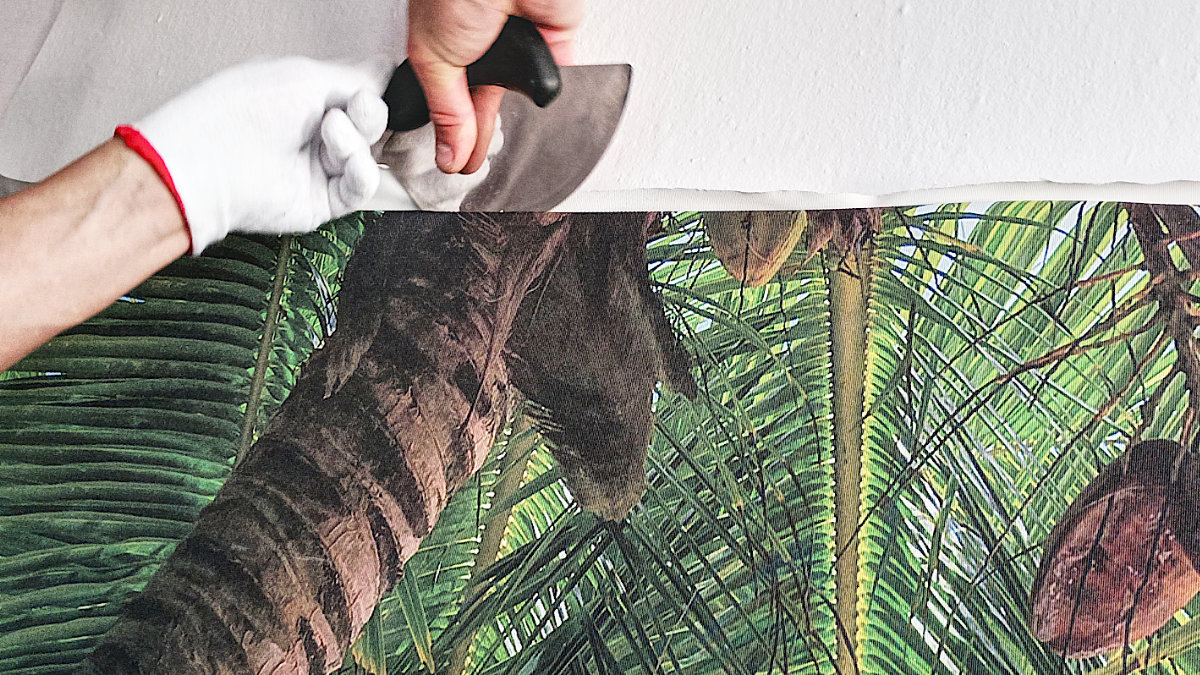

The fabric is clipped in successively, always starting from the center of the profile, and then from the centers of the resulting unpinned sections. Do it evenly on all sides. It is worth practicing, e.g. during our trainings.

When the fabric is properly pinned, cut off the excess fabric on the sides with a knife.
Installation of the masking gasket

Our wall is quite uneven (it’s a historic industrial building) and we were initially concerned if the thin mounting profiles, only 8 mm high, would compensate for the unevenness? However, it was achieved in a perfect way!
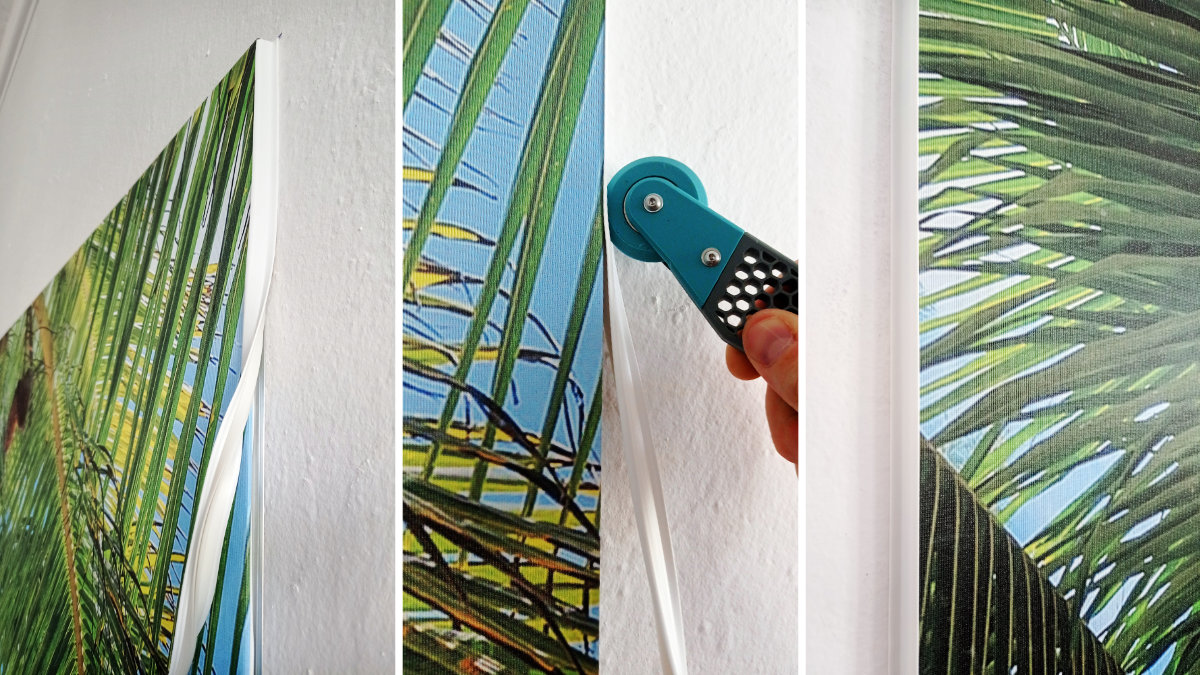
To finish the edges, we install a masking gasket in them. We used the popular PH4 finishing mask. We supported this with our proprietary tool – C-Roller.
And its done!

This is how the finished fabric on the wall looks like. The entire installation took approx. 2.5 hours, with the profile assembly taking the longest. However, if we used the existing structure (e.g. over a stretch ceiling made of PVC foil), the whole operation would take about one hour.
